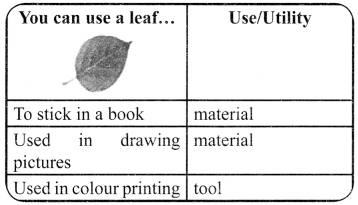JAC Board Class 8th Social Science Notes History Chapter 2 From Trade to Territory: The Company Establishes Power
→ Aurangzeb was the last of the powerful Mughal rulers. He established control over a very large part of the territory that is now known as India.
- After his death in 1707, many Mughal subadars (governors) and big zamindars began asserting their authority and establishing regional kingdoms.
- By the second half of the eighteenth century, however, a new power was emerging on the political horizon – the British.
→ East India Company Comes East
- The East India Company in 1600, acquired a charter from the ruler of England, Queen Elizabeth I, granting it the sole right to trade with the East.
- Mercantile trading companies in those days made profit primarily by excluding competition, so that they could buy cheap and sell dear.
- The royal charter, however, could not prevent other European powers from entering the Eastern markets.
- The Portuguese had already established their presence in the western coast of India and had their base in Goa. It was Vasco da Gama, a Portuguese explorer, who had discovered this sea route to India in 1498.
- In the early, seventeenth century, the Dutch arrived and soon after them the French came.
- The problem was that all the companies were interested in buying the same things. The fine qualities of cotton and silk produced in India had a big market in Europe. Pepper, cloves, cardamom and cinnamon too were in great demand.
- The only way the trading companies could flourish was by eliminating rival competitors. The urge to secure markets led to fierce battles between the trading companies.
![]()
→ East India Company begins trade in Bengal
- The first English factory was set up on the banks of the river Hugh in 1651.
- This was the base from which the Company’s traders known at that time as “factors” operated.
- By 1696 it began building a fort around the settlement. Two years later it bribed Mughal officials into giving the Company zamindari rights over three villages.
- It also persuaded the Mughal emperor Aurangzeb to issue a farman granting the Company the right to trade duty free.
- One of the cities were Kalikata, presently known as Kolkata or Calcutta)earlier).
→ How trade led to battles
- Through the early eighteenth century the conflict between the Company and the nawabs of Bengal intensified.
- Murshid Quli Khan was followed by Alivardi Khan and then Sirajuddaulah as the Nawab of Bengal. Each one of them was a strong ruler. They refused to grant the Company concessions, demanded large tributes for the Company’s right to trade, denied it any right to mint coins and stopped it from extending its fortifications.
- The Company on its part declared that the unjust demands of the local officials were ruining the trade of the Company, and trade could flourish only if the duties were removed.
- The conflicts led to confrontations and finally culminated in the famous Battle of Plassey.
→ The Battle of Plassey
- The Company was worried about the power of Sirajuddaulah became the nawab of Bengal and keen on a puppet ruler who would willingly give trade concessions and other privileges.
- After negotiations failed, the Nawab marched with 30,000 soldiers to the English factory at Kassimbazar, captured the Company officials, locked the warehouse, disarmed all Englishmen, and blockaded English ships. Then he marched to Calcutta to establish control over the Company’s fort there.
- In 1757, Robert Clive led the Company’s army against Sirajuddaulah at Plassey.
- One of the main reasons for the defeat of the Nawab was that the forces led by Mir
Jafar who was one of Sirajuddaulah’s commanders, never fought the battle. - Clive had managed to secure his support by promising to make him nawab after crushing Sirajuddaulah.
- The Battle of Plassey became famous because it was the first major victory the Company won in India.
- After the defeat at Plassey, Sirajuddaulah was assassinated and Mir Jafar made the nawab. The Company was still unwilling to take over the responsibility of administration. Its prime objective was the expansion of trade.
- When Mir Jafar protested, the Company deposed him and installed Mir Qasim in his place. When Mir Qasim complained, he in turn was defeated in a battle fought at Buxar in 1764 and driven out of Bengal, and Mir Jafar was reinstalled.
- They wanted more territories and more revenue. By the time Mir Jafar died in 1765, the mood of the Company had changed. Having failed to work with puppet nawabs, Clive declared: “We must indeed become nawabs ourselves.”
- Finally, in 1765 the Mughal emperor appointed the Company as the Diwan of the provinces of Bengal.
- From the early eighteenth century its trade with India had expanded. But it had to buy most of the goods in India with gold and silver imported from Britain.
- Revenues from India could finance Company expenses. These revenues could be used to purchase cotton and silk textiles in India, maintain Company troops, and meet the cost of building the Company fort and offices at Calcutta.
→ Company officials become ‘nabobs’
- Each company servant began to have visions of living like nawabs.
- After the Battle of Plassey the actual nawabs of Bengal were forced to give land and vast sums of money as personal gifts to Company officials.
- Robert Clive was appointed Governor of Bengal in 1764, he was asked to remove corruption in Company administration but he was himself cross-examined in 1772 by the British Parliament.
- The Company officials who managed to return with wealth led flashy lives and flaunted their riches. They were called “nabobs” means an anglicised version of the Indian word nawab.
→ Company Rule Expands
- The Company used a variety of political, economic and diplomatic methods to extend its influence before annexing an Indian kingdom.
- After the Battle of Buxar in 1764, the Company appointed Residents in Indian states. They were political or commercial agents and their job was to serve and Anther the interests of the Company.
- When Richard Wellesley was Governor-General (1798-1805), the Nawab of Awadh was forced to give over half of his territory to the Company in 1801 as he failed to pay for the “subsidiary forces”.
- Hyderabad was also forced to cede territories on similar grounds.
![]()
→ Tipu Sultan – ‘The Tiger of Mysore’
- Mysore had grown in strength under the leadership of powerful rulers like Haidar Ali (ruled from 1761 to 1782) and his famous son Tipu Sultan (ruled from 1782 to 1799).
- In 1785, Tipu Sultan stopped the export of sandalwood, pepper and cardamom through the ports of his kingdom, and disallowed local merchants from trading with the Company.
- He also established a close relationship with the French in India, and modernized his army with their help.
- Four wars were fought with Mysore (1767¬69, 1780-84, 1790-92 and 1799). Only in the last, the Battle of Seringapatam did the Company ultimately win a victory.
→ War with the Marathas
- With the defeat in the Third Battle of Panipat in 1761, the Marathas’ dream of ruling from Delhi was shattered.
- They were divided into many states under different chiefs (sardars) belonging to dynasties such as Sindhia, Holkar, Gaikwad and Bhonsle.
- These chiefs were held together in a confederacy under a Peshwa (Principal Minister) who became its effective military and administrative head based in Pune.
- Mahadji Sindhia and Nana Phadnis were two famous Maratha soldiers and statesmen of the late eighteenth century.
- In the first war that ended in 1782 with the Treaty of Salbai, there was no clear victor. The Second Anglo-Maratha War (1803-05) was fought on different fronts, resulting in the British gaining Orissa and the territories north of the Yamuna river including Agra and Delhi. Finally, the Third Anglo-Maratha War of 1817-19 crushed Maratha power.
→ The claim to paramountcy
- Under Lord Hastings (Governor-General from 1813 to 1823), a new policy of “paramountcy” was initiated. Now the Company claimed that its authority was paramount or supreme, hence its power was greater than that of Indian states.
- When the British tried to annex the small state of Kitoor (in Karnataka today), Rani Channamma took to arms and led an anti- British resistance movement. She was arrested in 1824 and died in prison in 1829.
- But Rayanna, a poor chowkidar of Sangoli in Kitoor, carried on the resistance. With popular support he destroyed many British camps and records. He was caught and hanged by the British in 1830.
- British fought a prolonged war with Afghanistan between 1838 and 1842 and established indirect Company rule there. Sind was taken over in 1843.
- But the presence of Maharaja Ranjit Singh held back the Company. After his death in 1839, two prolonged wars were fought with the Sikh kingdom. Ultimately, in 1849, Punjab was annexed.
→ The Doctrine of Lapse
- Lord Dalhousie was the Governor-General from 1848 to 1856. He devised a policy that came to be known as the Doctrine of Lapse.
- The doctrine declared that if an Indian ruler died without a male heir his kingdom would “lapse”, and become part of Company territory. One kingdom after another was annexed simply by applying this doctrine – Satara (1848), Sambalpur (1850), Udaipur (1852), Nagpur (1853) and Jhansi (1854).
- Enraged by the humiliating way in which the Nawab of Awadh was deposed, the people of Awadh joined the great revolt that broke out in 1857.
→ Setting up a New Administration
- Warren Hastings (Governor-General from 1773 to 1785) was one of the many important figures who played a significant role in the expansion of Company power.
- British territories were broadly divided into administrative units called Presidencies. There were three Presidencies: Bengal, Madras and Bombay.
- Each was ruled by a Governor. The supreme head of the administration was the Governor-General.
- Each district was to have two courts – a criminal court (faujdari adalat) and a civil court (diwani adalat).
- The criminal courts were still under a qazi and a mufti but under the supervision of the collectors.
- A major problem was that the Brahman pandits gave different interpretations of local laws based on different schools of the dharmashastra.
- In 1775, eleven pandits were asked to compile a digest of Hindu laws. N.B. Halhed translated this digest into English.
- By 1778, a code of Muslim laws was also compiled for the benefit of European judges.
- The principal figure in an Indian district was the Collector. As the title suggests, his main job was to collect revenue and taxes and maintain law and order in his district with the help of judges, police officers and darogas.
![]()
→ The Company army
- The Mughal army was mainly composed of cavalry (sawars – trained soldiers on horseback) and infantry, paidal (foot) soldiers. They were given training in archery (teer-andazi) and the use of the sword.
- The East India Company adopted the method of recruiting peasants when it began recruitment for its own army, which came to be known as the sepoy army.
- As warfare technology changed from the 1820s, the cavalry requirements of the Company’s army declined because the British empire was fighting in Burma, Afghanistan and Egypt where soldiers were armed with muskets and matchlocks.
- In the early nineteenth century the British began to develop a uniform military culture.
→ Conclusion
- Thus, the East India Company was transformed from a trading company to a territorial colonial power.
- Steamships reduced the journey time to three weeks enabling more Britishers and their families to come to a far-off country like India.
- By 1857, the Company came to exercise direct rule over about 63 per cent of the territory and 78 per cent of the population of the Indian subcontinent.











